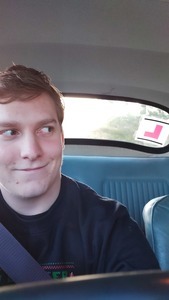12144619
Socio-Cultural Influences on the Development of Rational Recreation
Description
Mind Map by Wesley Spearman, updated more than 1 year ago
More
Less

|
Created by Wesley Spearman
about 7 years ago
|
|
Resource summary
Socio-Cultural Influences on the
Development of Rational Recreation
- Industrial Revolution
- Initial effects
- Rural-urban migration
- Lack of leisure time
- Lack of income
- Poor health
- Loss of rights
- Lack of public provision
- Rural-urban migration
- Second half
- Improved health and hygiene
- Increase in wages
- Increased leisure time
- New middle class
- Influence of ex-public schoolboys
- Values of athleticism
- Industrial patronage
- Improved transport and communications
- Cheaper to travel
- Improved health and hygiene
- Initial effects
- Urbanisation
- Lack of space
- Large working-class populations
- Loss of traditional sports
- Change in working conditions
- Lack of space
- Transport revolution
- Movement of teams/spectators
- Improved access to different parts of the country
- Cheaper train travel
- Improved access to the countryside
- Movement of teams/spectators
- Communications
- Society became more literate
- Printed media improved knowledge
and awareness of sport
- Increased knowledge of results
- Emergence of sporting heroes/role models
- Society became more literate
- Influence of the church
- Encouraged social control
- Church halls provided venues for sport
- Sport viewed as way of promoting Christian values
- YMCA promoted healthy body/healthy mind link
- Clergy viewed sport as a good way of improving church attendance
- Organised teams, set up clubs, organised fixtures
- Encouraged social control
- Three tier society
- Codification
- Strict rules
- Strict rules
- Competitions
- Development of leagues
- Development of leagues
- Public provision
- Dev. of public facilities
- Dev. of public facilities
- Increased leisure time
- Move to professionalism
- Codification
- British Empire
- Sport seen as good way of
installing moral values and
binding people across the empire
- Teachers
- Dev. teams and taught sporting values
- Dev. teams and taught sporting values
- Industrialists/factory owners
- Set up teams
- Gave workers time off to play
- Set up teams
- Clergy
- Dev. church teams
- Became missionaries
- Dev. church teams
- Officers in British army
- Used sport with armed services
- Used sport with armed services
- Diplomats
- Travelled the world and took sport with them
- Travelled the world and took sport with them
- NGBs
- Codified sports
- Established leagues & competitions
- Codified sports
- Sport seen as good way of
installing moral values and
binding people across the empire
- Public provision
- Dev. public baths
- Segregated for different classes
- Segregated for different classes
- Improved health and hygiene
- Plunge baths developed for swimming/recreation
- Improved work productivity due to healthier population
- Dev. public baths
- Development of NGBs
- Sport increasing in popularity
- More teams & clubs
- More national and international fixtures
- Leagues/competitions required
- Codification required
- Maintenance of 'amateur ideal'
- Sport increasing in popularity
0 comments
There are no comments, be the first and leave one below:
Want to create your own Mind Maps for free with GoConqr? Learn more.

